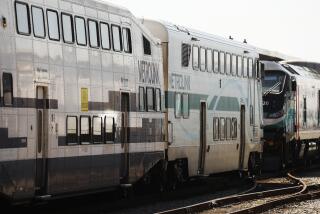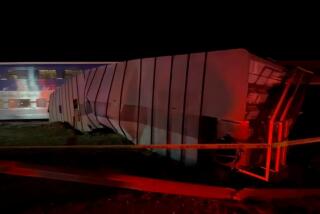Push-Pull Not at Fault
- Share via
Harry Pace is on the wrong track in blaming the Metrolink accident in Pacoima on the fact that the locomotive was pushing the train as opposed to leading the train (Letters to the Editor, Times Valley Edition, Dec. 6).
The practice of commuter rail locomotives operating on a push-pull mode is common and acceptable. Most commuter rail systems on the East Coast and in Canada have for many years operated with the locomotive pushing the cars in one direction and pulling them in the opposite direction. The train operator always keeps control from the leading end.
To say that the truck driver was confused because he felt the train was retreating into the distance is mere speculation. Neither the accident investigators nor Harry Pace know what the truck driver saw or thought in the seconds before the fatal crash. However, had the driver thought the train was moving away, it would have had to pass him as he was traveling parallel to the track.
What we know is that investigators have found that the Metrolink train and the train engineer were operating in compliance with federal, state and local railroad regulations.
The circumstances of the Pacoima accident indicate that regardless of whether the locomotive was in front of or behind the train, the results would sadly have been the same for the truck driver.
Most train accidents occur because pedestrians or drivers fail to observe railroad crossing rules. A recent Sheriff’s Department report disclosed that despite warning lights, bells, train whistles and descending gates, an average of 600 drivers a week race across the Blue Line tracks in front of oncoming trains.
RICHARD STANGER
Los Angeles
Stanger is executive director, Southern California Regional Rail Authority .
More to Read
Sign up for Essential California
The most important California stories and recommendations in your inbox every morning.
You may occasionally receive promotional content from the Los Angeles Times.










